Vegetable Stock Recipe
Vegetable stock is so simple to make at home and so much better than store-bought. I will walk you through how to make an easy and delicious vegetable stock including some tips for best results.
It’s easy to keep homemade stock in the freezer for times you need it so make some Chicken Stock and Beef Stock as well.
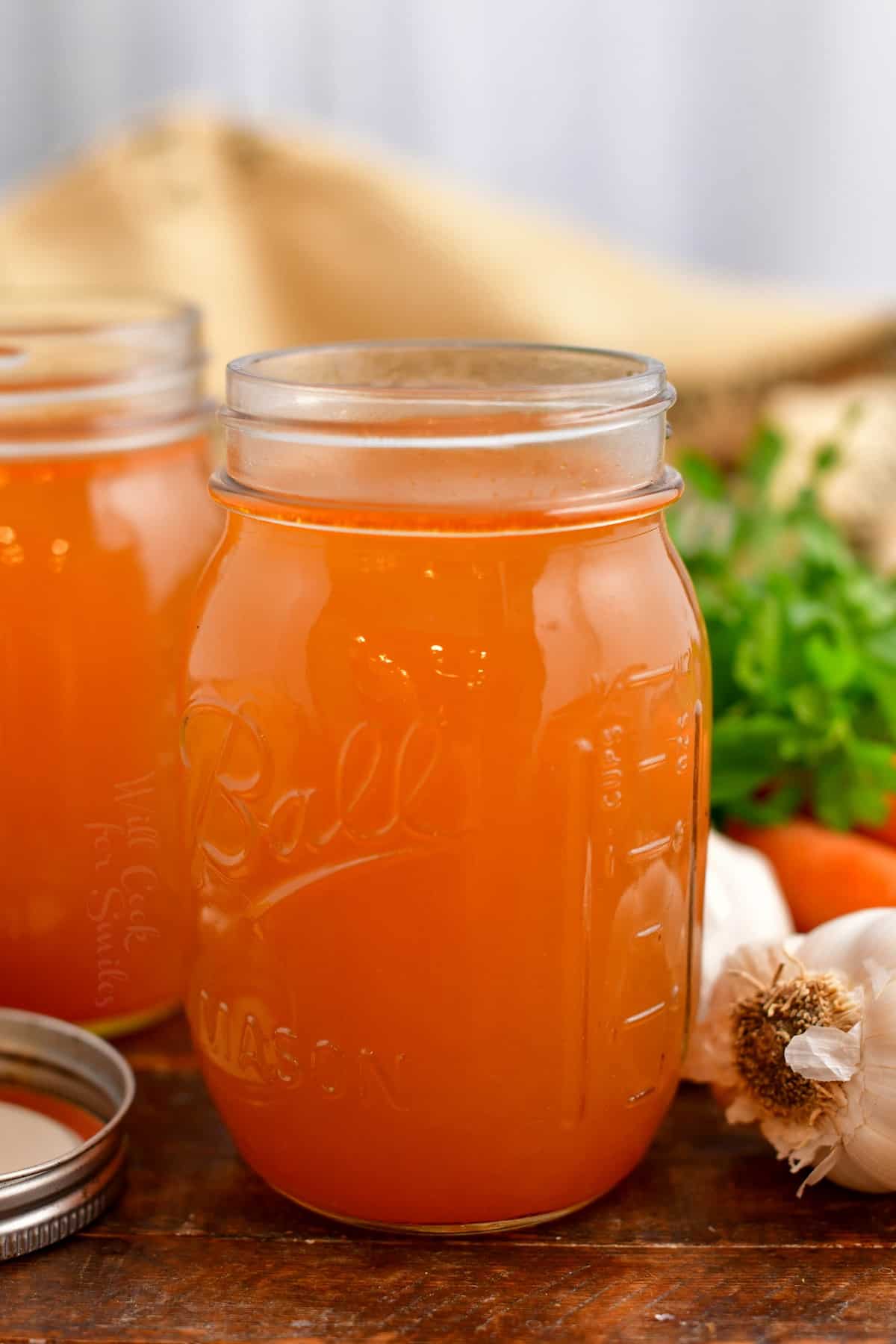
Table of contents
It’s not surprising that most cooks choose to use store-bough stock and broth because it’s so convenient. I know that I do that and I usually have homemade chicken and vegetable stock in the freezer. But, much like many other convenient products, stock and broth from the store are much more expensive.
There is also quite a big taste difference in the store-bought stocks and broths. It taste quite different from homemade and even brands taste different from each other.
Making your own homemade vegetable broth is the best way to make your soups tastier. I can’t count how many times I’ve been told that using homemade stocks changed the way people’s soup taste 100%.
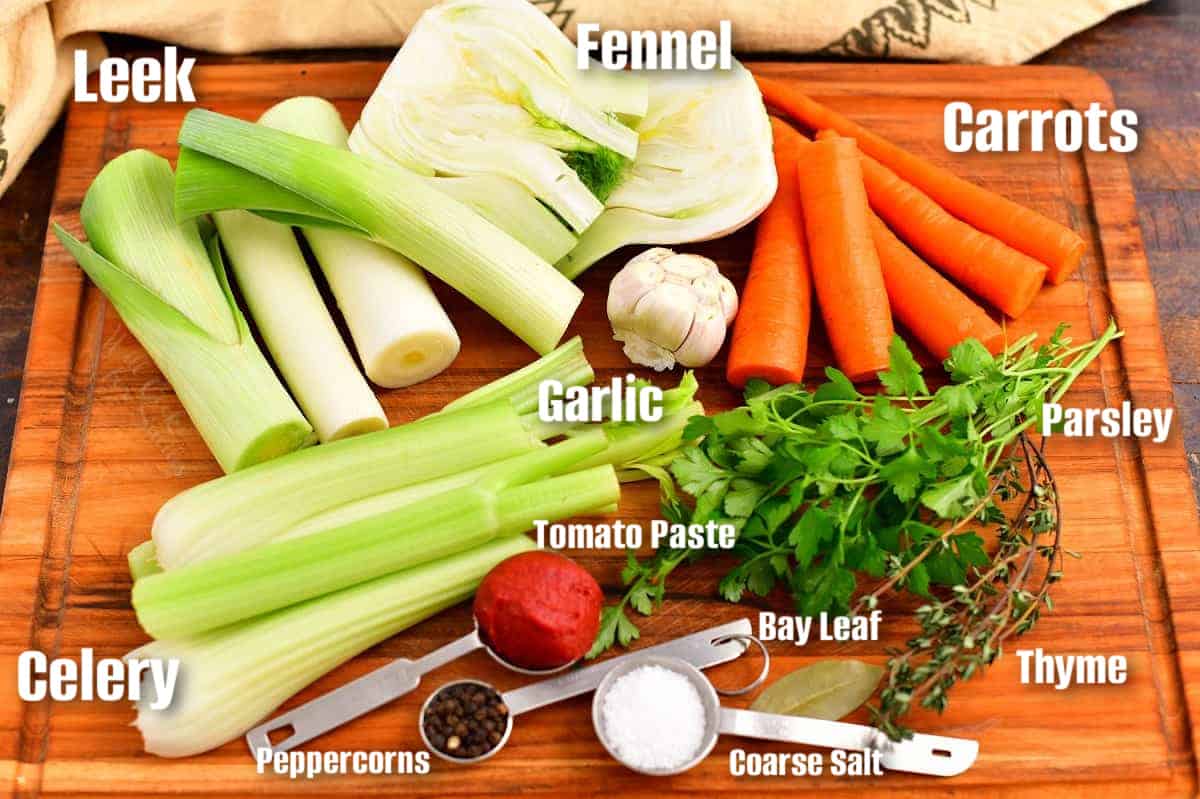
What NOT to use in vegetable stock
PRO TIP: Not every vegetable is meant to go into the stock! Make sure to read these and not what not to use.
Surprisingly, there are many common vegetables that simply do not work well with others when it comes to stock. Broccoli, for example, can create a strong bitter taste that overpowers the other ingredients. Green beans and zucchini also have bitter taste after boiling for a long time.
Avoid using the outer leaves of the celery, too. While the celery ribs are excellent in this recipe, the outer leaves are far too bitter to include.
Lettuce won’t ruin the broth, but it won’t add anything to it, either. It’s an unnecessary vegetable to chop, so don’t waste your time.
Don’t use potatoes, squashes, or turnips. These vegetables are far too starchy to use in a stock.
Beets is another vegetable to avoid because it has a very strong and overpowering taste.
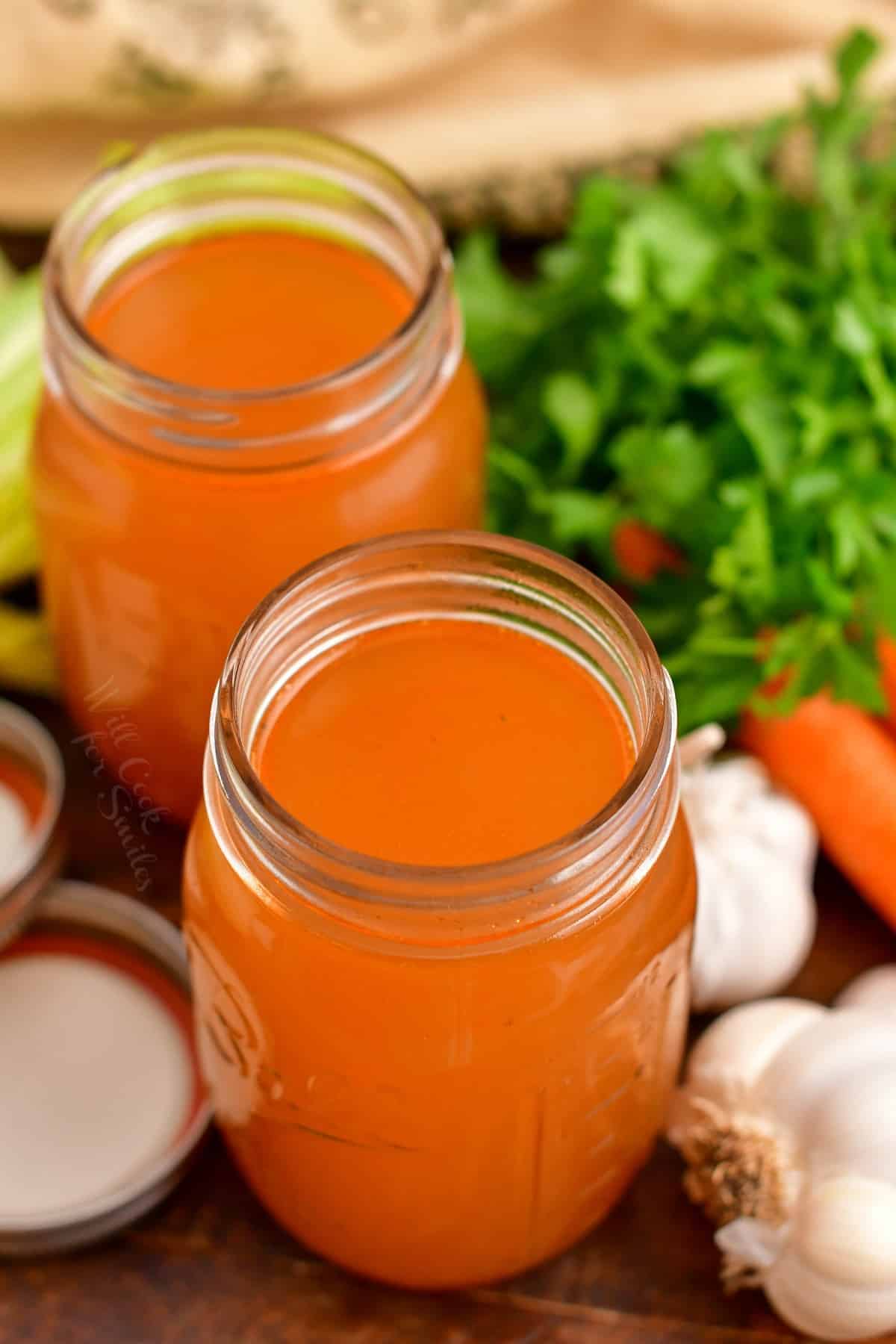
How to Make Vegetable Stock
First, prep the vegetables:
- Cut the leeks. Slice the leeks in half. Also, make sure there’s no dirt on the leeks by giving them a quick rinse in the sink. Slice the fennel. After you discard any dark green shoots, slice the fennel bulb in half.
- Prep the celery and carrots. You’ll need these veggies to fit nicely into the pot. So, rinse them and cut in halves of quarters. Peel the garlic. Peel the outer, loose skins off the garlic bulb and slice the top of the bulb off.
Next, make the stock:
- Sear the vegetables. Work in batches, that way the stock pot isn’t too crowded. Sear all the veggies until they’re golden brown in color. Add the vegetables to the pot once they’re seared.
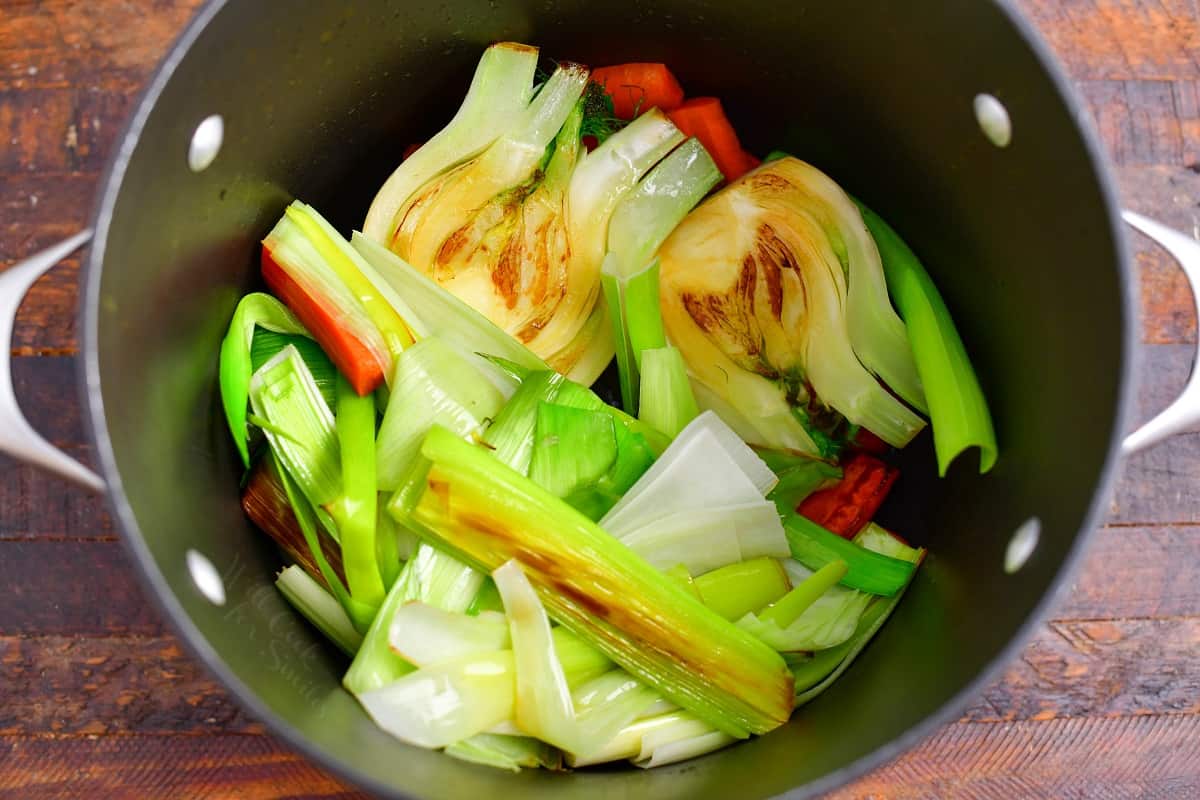
Add the remaining ingredients. Once all the vegetables are seared and in the pot, add the water, herbs, salt, peppercorns, and tomato paste. Stir everything to fully combine.
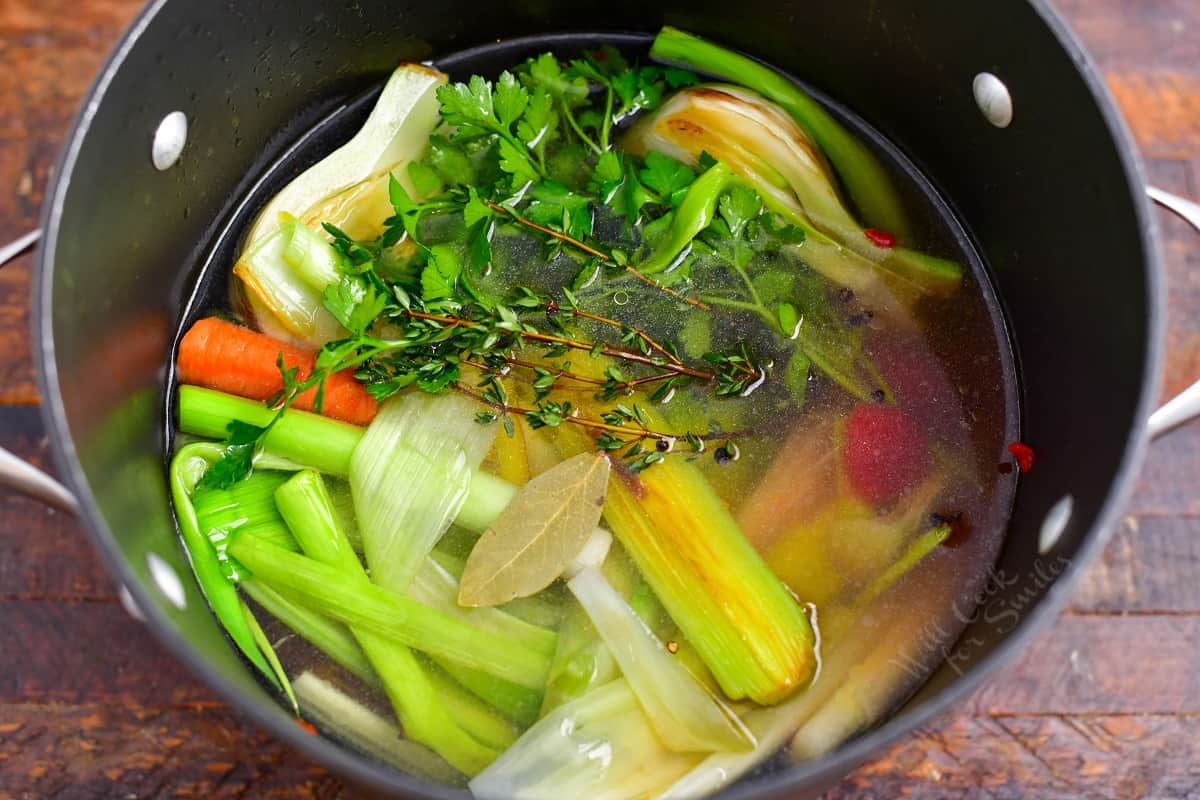
Cook the veggies. Bring everything to a simmer and lower the heat. Using medium low heat, allow the veggies to cook for about an hour.
PRO TIP: Don’t try to rush this step by turning the heat up or shortening the cooking time! You want the ingredients to take their time so the end result is really flavorful.
Strain the liquid. Carefully pour the mixture through a mesh strainer or through several layers of cheesecloth. Don’t forget to place a bowl underneath to catch the liquid!
When the vegetables are a bit cooler and safe to handle, squeeze any remaining liquid out of them. This way, no flavor will be left behind. You can discard the veggies after they’ve been squeezed.
PRO TIP: discard remaining vegetables. They are beyond saving because all the nutritional value has been cooked off into the stock.
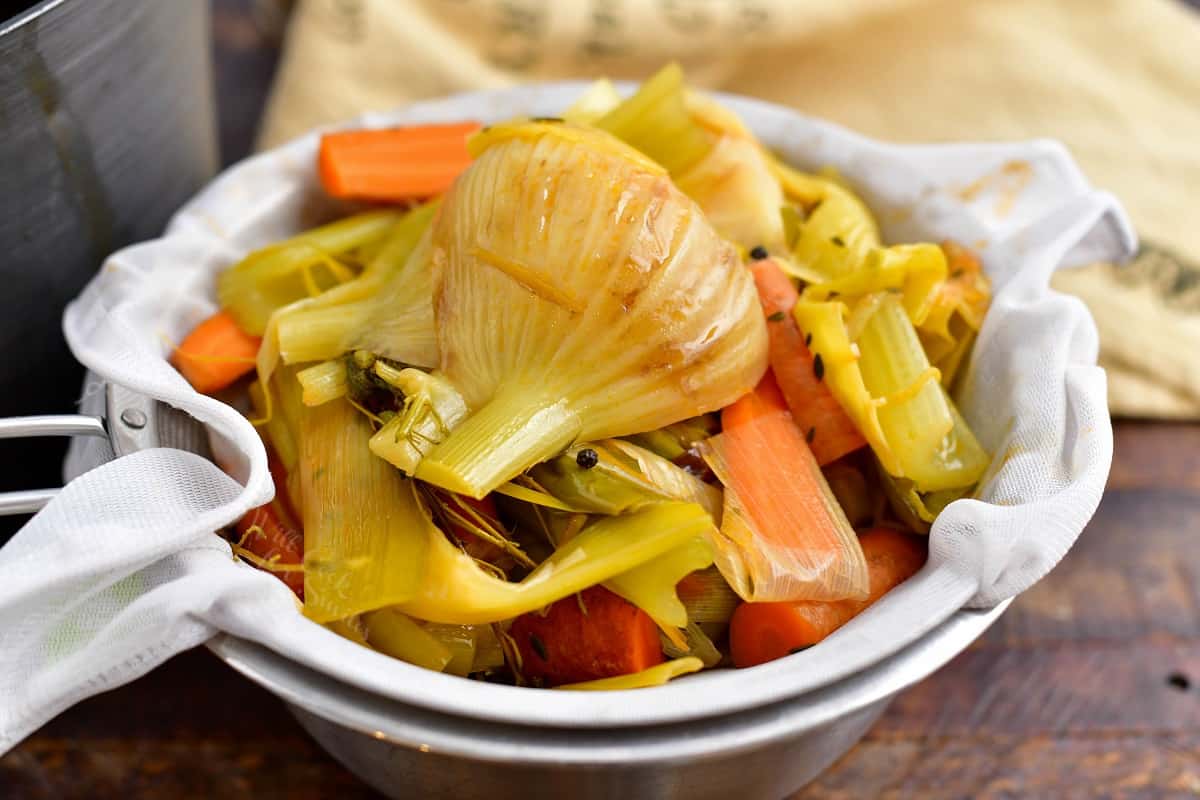
Can I Make Vegetable Stock in a Slow Cooker?
Of course! Start by searing the vegetables in a pan over medium to medium-high heat and transfer them into the slow cooker. Add seasoning, herbs and water as recipe states. Close the lid and cook on LOW for about 8 hours. Finish the recipe as instructed in the recipe: strain the stock through the fine mesh strainer, press on the veggies to release the leftover liquids, and discard leftover veggies.
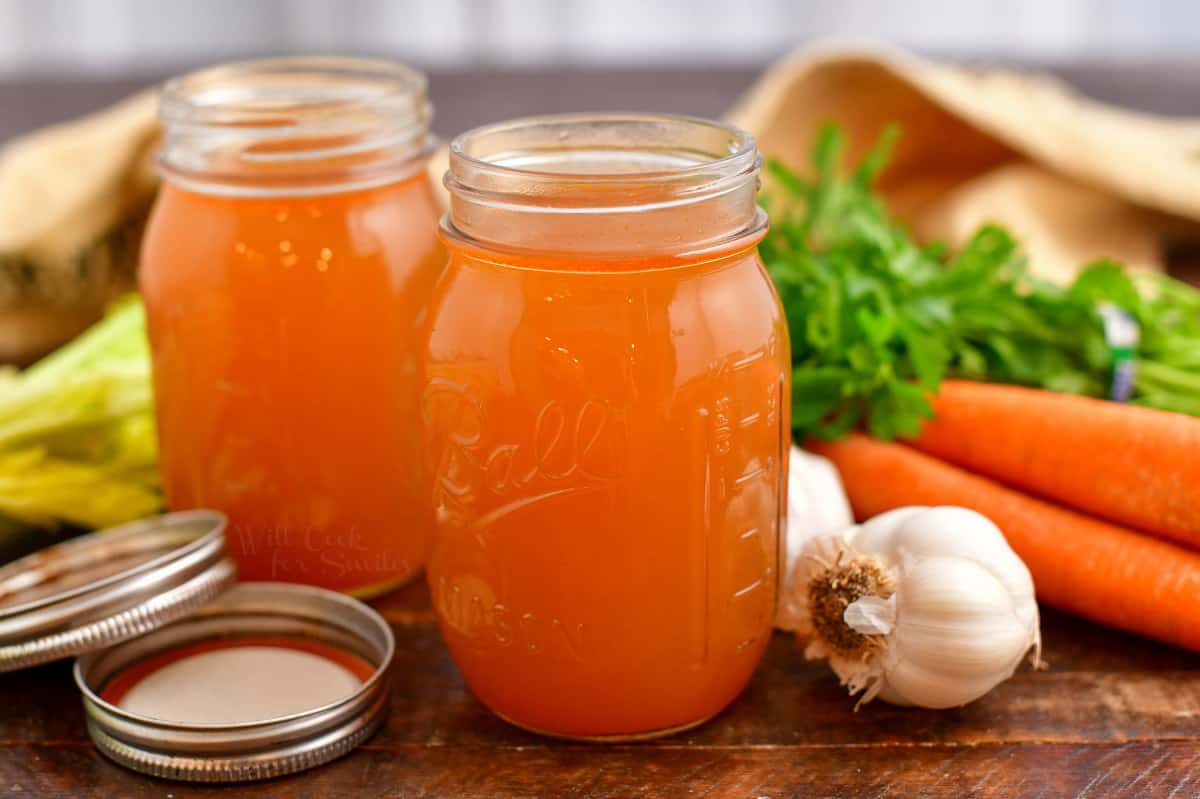
Where To Use Vegetable Stock?
The most obvious use of vegetable stock is vegetarian soups. You can also use it when making sauces when the recipe calls for sock, broth, or even water to add more flavor. Sauces, pasta sauces, and seafood sauces both benefit from it.
In vegetarian dishes like the parmesan risotto, pasta primavera, and more. You can also use it to cook rice and pasta!
DID YOU MAKE THIS RECIPE? PLEASE leave a 🌟 star rating! Let me know how you liked it by leaving the 📝 comment below or share and tag me on social media @willcookforsmiles. DON’T FORGET to subscribe to my newsletter!

Vegetable Stock Recipe
Ingredients
- 2 tbsp canola oil
- 2 leeks
- 3-4 celery ribs
- 3-4 medium carrots
- 1 large fennel
- 2 tbsp tomato paste
- 1 bulb of garlic
- 5-7 whole parsley, stems and leaves
- 4-5 thyme sprigs
- 1 bay leaf
- 1/2-1 tbsp coarse salt
- 1 tsp whole peppercorns
- 10-12 cups warmed water
Instructions
- Cut the damaged or wilted dark green parts of the leek and the root off and discard. Slice leeks on half, lengthwise, and rinse in between the layers. (There is often dirt hiding between the layers of the leek.)
- Cut off the darker green shoots off the fennel bulb and discard. Slice fennel bulb in half.
- Cut celery and carrots in halves of quarters so it fits better in a pot.
- Peel the outer loose skin off the garlic bulb and slice off the very tip of the bulb, exposing the "meat" of garlic.
- Preheat a large Dutch oven or another large soup pot over medium-high heat to sear the vegetables.
- Sear vegetables in batches so you don't overcrowd the bottom of the pot until golden brown. When all the vegetables have been seared, add them back into the pot. (Sear the bulb of garlic cut side down.)
- Pour in water and stir in herbs, salt, peppercorns, and tomato paste until completely incorporated.
- Bring everything to simmer and lower the heat to low. Cover with a lid but leave a small crack for the steam to escape.
- Let the vegetables cook for about an hour.
- Cover the strainer with a mesh vegetable bag or cheese cloth and strain the stock through it.
- Let the cooked vegetables cool in the strainer for a little while and then squeeze out leftover liquid out of them through the mesh bag (or the cheese cloth).
- Discard the cooked vegetables.
Storing:
- Store homemade vegetable stock in the refrigerator, in glass jars with a lid. In the refrigerator, homemade stock will last for up to 3 days. I always recommend using the stock within a day or two or freeze it.
Notes
Nutrition
Originally published on Will Cook For Smiles in December, 2020.
All images and text ©Lyubov Brooke for ©Will Cook For Smiles. Please do not use my images without prior permission. If using my posts in collections and features, please link back to this post for the recipe.
Disclaimer: Nutrition information shown is not guaranteed to be 100% accurate as most ingredients and brands have variations.
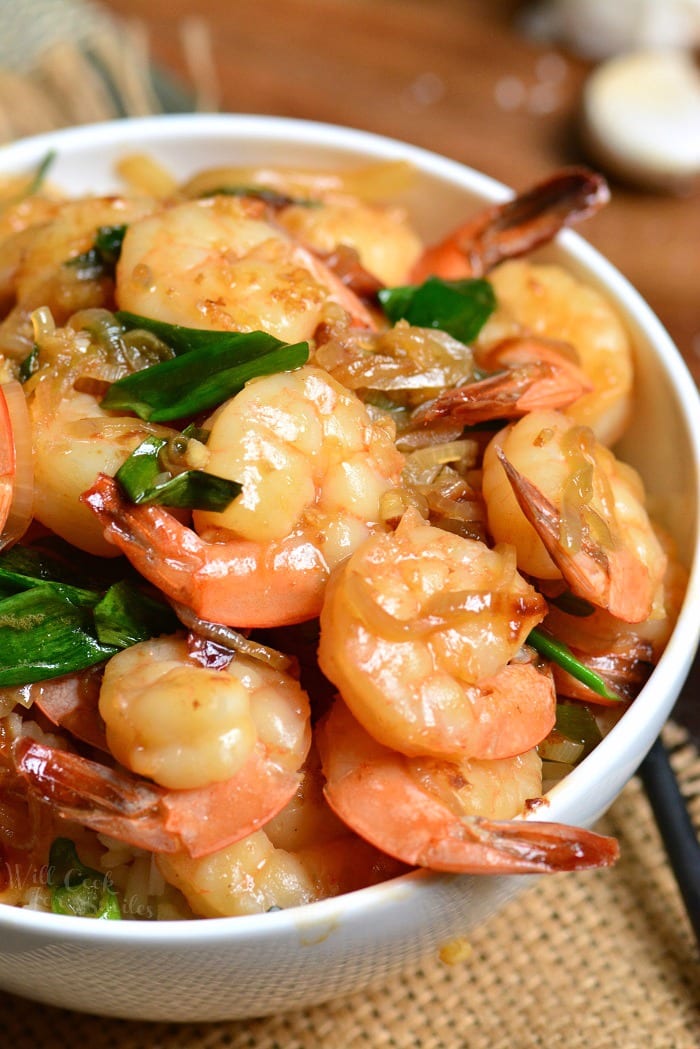
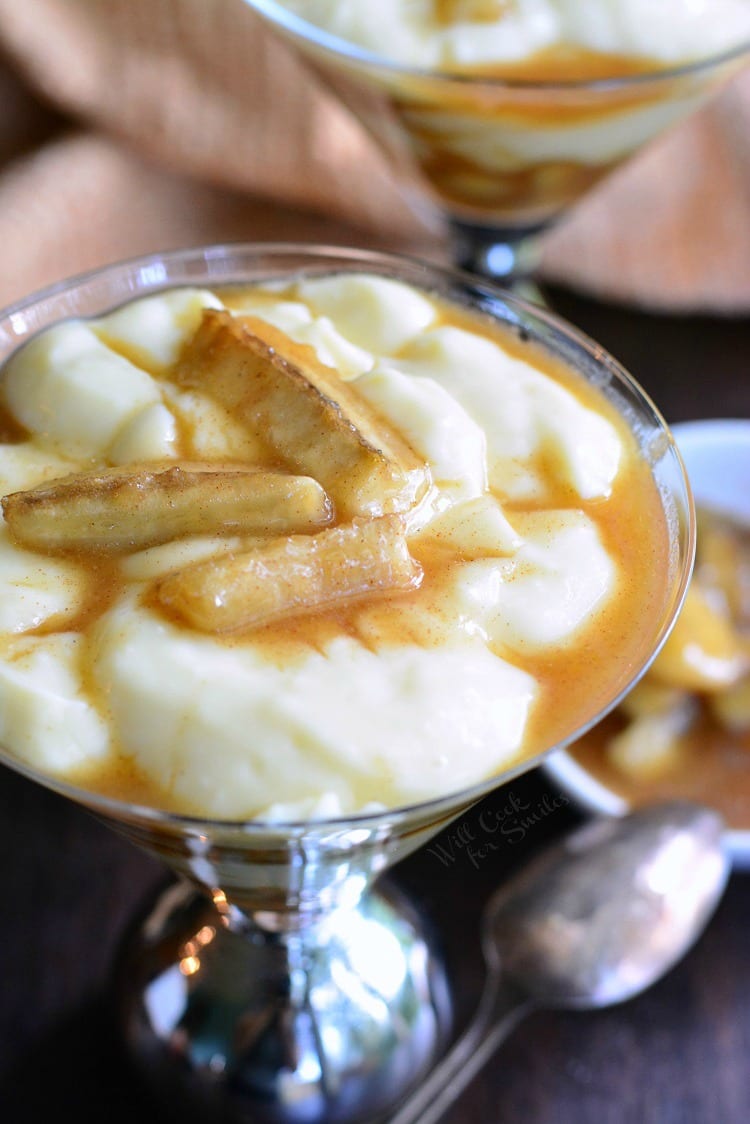
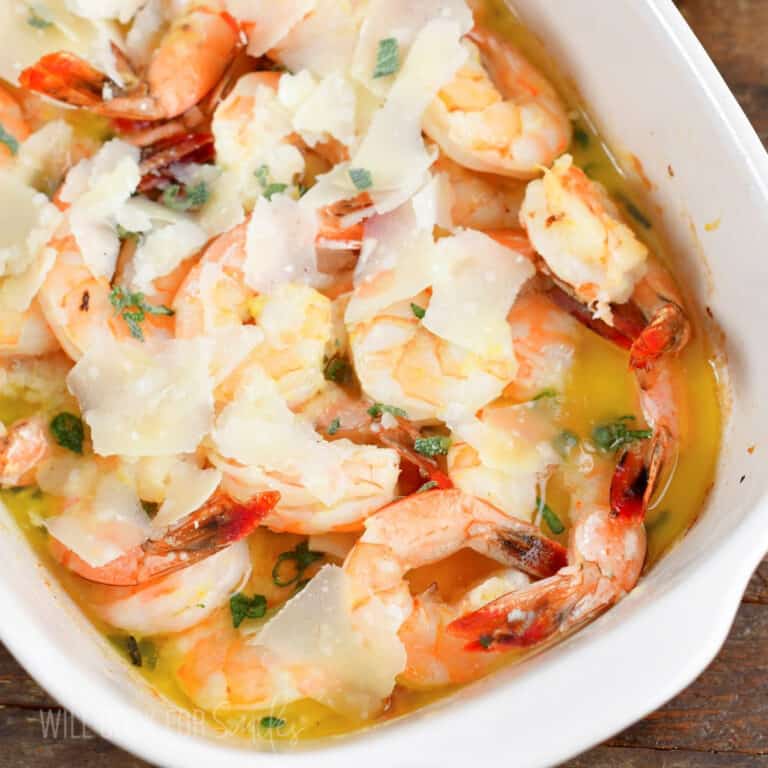


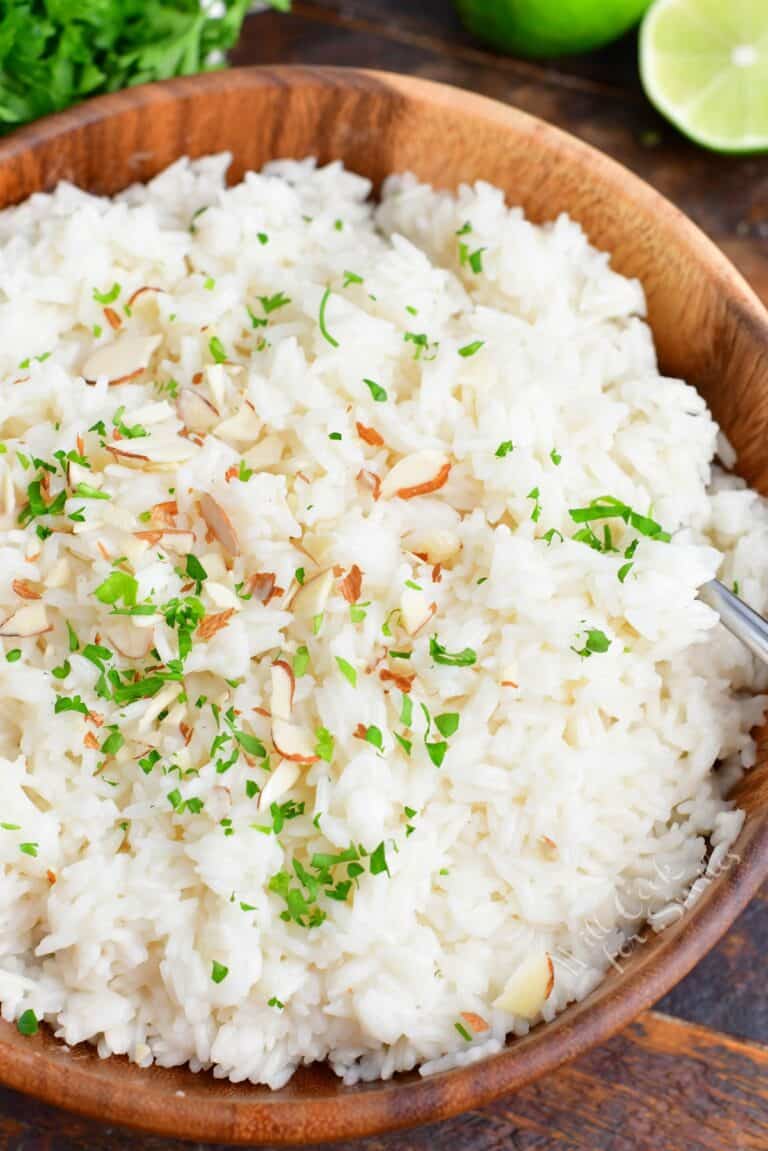








The soup I made with this stock was so good!